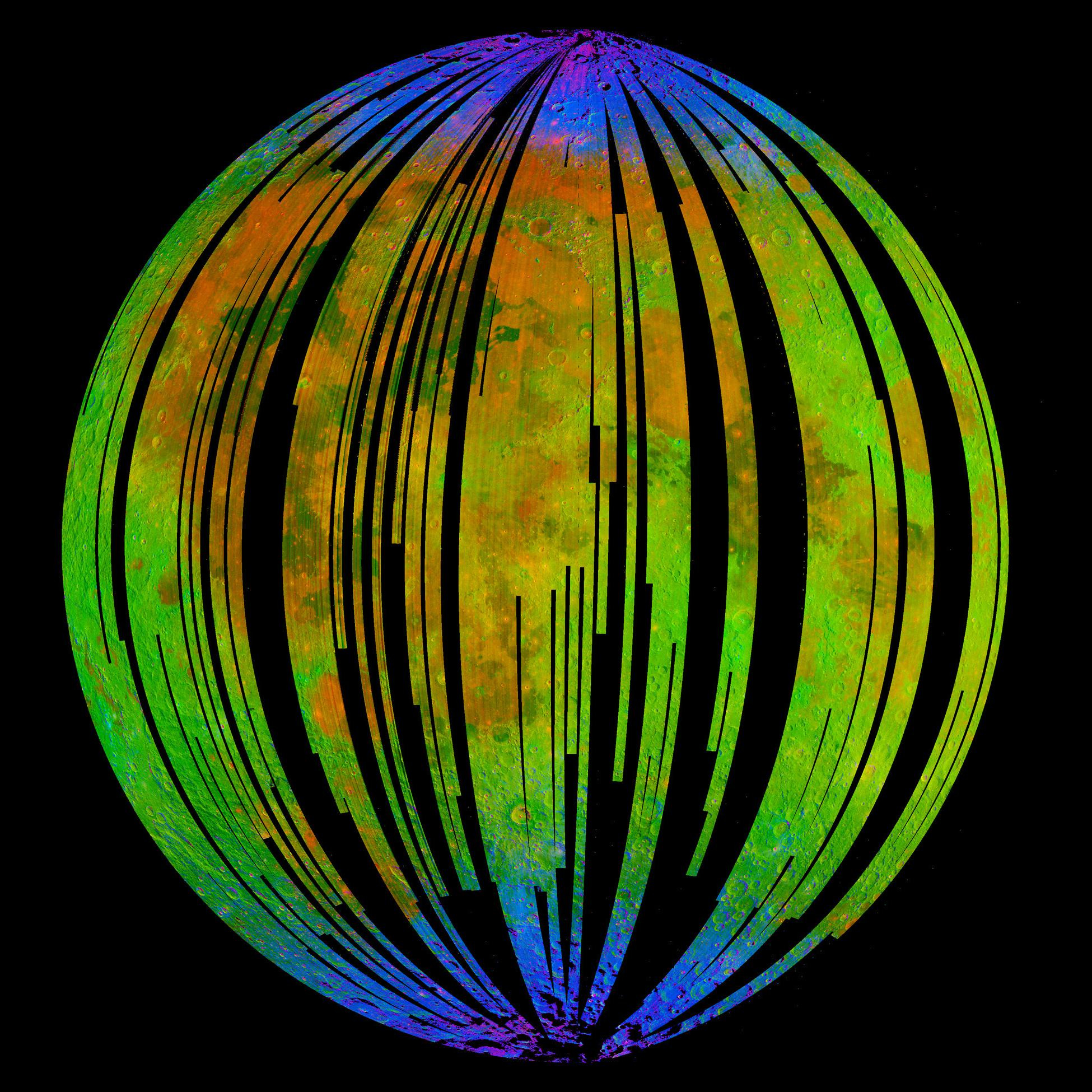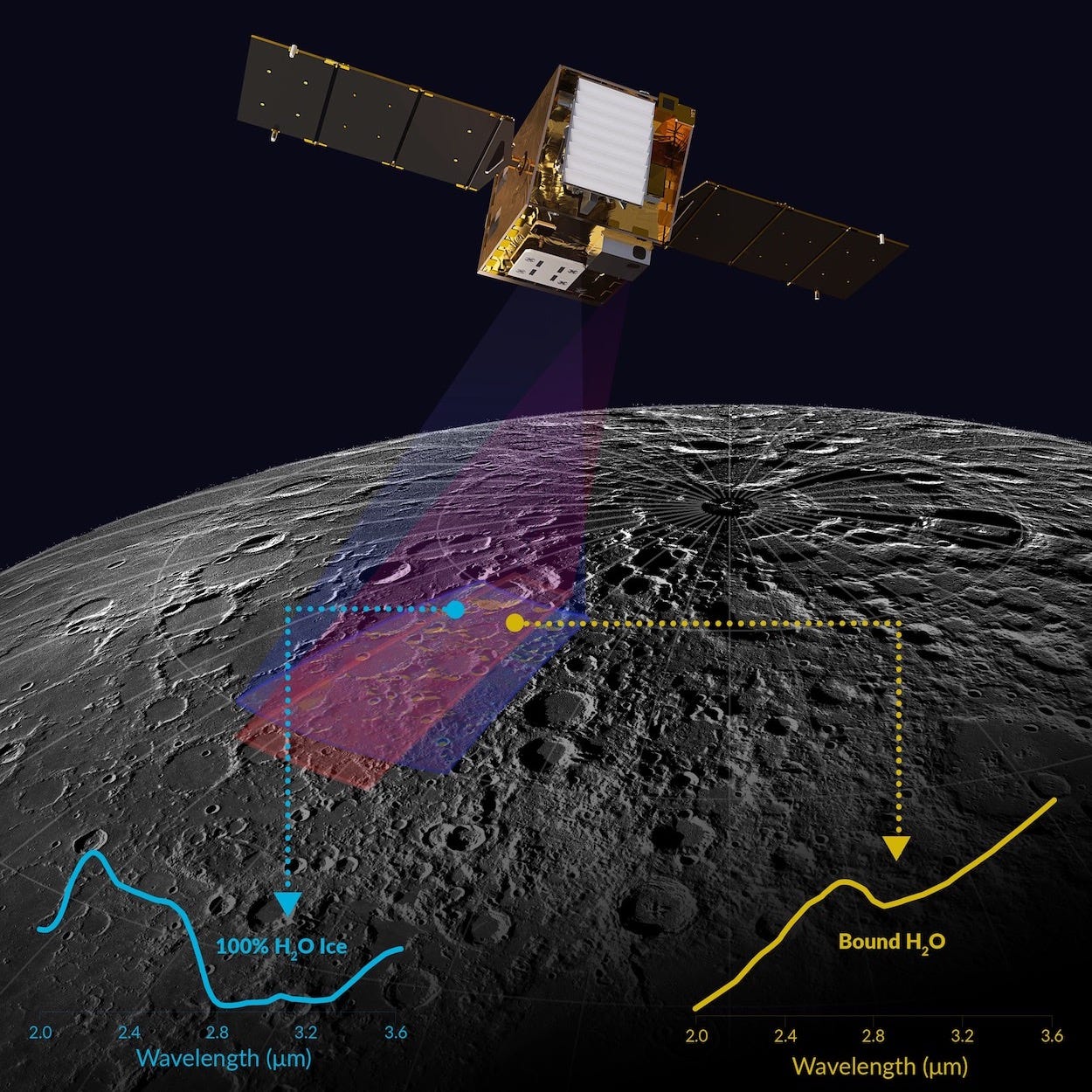Lunar Trailblazer, NASA’s Moon water mapper
Advancing our understanding of water across the Moon for exploration and science.
With its Artemis campaign, NASA wants to succeed the Apollo missions by landing humans on our Moon again—this time to stay. Between Apollo and Artemis, one stark difference in exploring our cosmic neighbor is the study of lunar water.
While studies of Apollo samples originally supported a long-held consensus of our Moon being extremely dry, technological advances over three decades later allowed discovering water within lunar volcanic glasses and minerals. Around the same time, the Chandrayaan 1 mission discovered water in relatively large amounts across the Moon. Luna turned out not to be bone dry after all. These and subsequent developments rekindled global interest in exploring our cosmic neighbor from a resource utility as well as scientific standpoint.
Since then, scientists have been trying to understand exactly how water molecules and other such volatiles get produced on the Moon, and then get transported to the poles where they can get sequestered in permanently shadowed regions for billions of years. For Artemis’ ambition to have astronauts living on the Moon using local resources like water, NASA needs to know its exact nature and accessibility to plan ahead. To that end, a slew of agency-funded robotic missions over the next five years will take specific measurements to help scientists get an actionable grasp on the nature of lunar water. This is where Lunar Trailblazer comes in.

How will Lunar Trailblazer map water on the Moon?
The 210-kilogram Trailblazer spacecraft will launch in 2023 on a SpaceX Falcon 9 rocket alongside the second Intuitive Machines lander delivering NASA’s instruments to the Moon. After entering a polar lunar orbit, Trailblazer will use its two instruments to map the form, abundance, and distribution of water on the Moon, including ice on its poles and regolith- or rock-associated water in sunlit regions.
Much like Chandrayaan 1, Trailblazer has an infrared spectrometer to detect water and hydroxyl (OH) molecules based on how the Moon’s surface reflects and absorbs infrared light. But Trailblazer’s superior resolution can better differentiate between the two, in all of their icy, liquid, and vapor forms. Since the temperature of the surface being mapped affects the results, Trailblazer’s second instrument will simultaneously measure temperatures to correctly calibrate the water detections.

Cool as lunar ice: The Trailblazer team has put up an online interactive map to browse and learn about each of the mission’s mapping targets. It would be amazing if this became a staple for all planetary missions.
How will Lunar Trailblazer advance our understanding of water on the Moon?
Trailblazer’s high-resolution maps of the amount and distribution of the Moon’s polar water ice, and how much of it exists as ice crystals versus being mineral-bound, will provide scientists with the geologic context necessary to conduct and interpret future studies from the surface. This is true for missions like NASA’s VIPER rover launching in 2024 to tangibly study water ice inside permanently shadowed regions as well as for all crewed Artemis missions aiming to bring lunar ice as cryogenic samples for meticulous studies on Earth.
Trailblazer will also monitor water content changes and its migration across sunlit regions in a wide range of latitudes. Coupled with similar ongoing observations by India’s Chandrayaan 2 orbiter, we’ll get to know exactly how water moves across the Moon—day and night—and settles inside permanently shadowed regions. This knowledge will extend to airless bodies across the Solar System, including Mercury and Ceres, both of which boast water ice cold traps.

Trailblazer’s comprehensive dataset will help scientists know and compare the level of contribution of each lunar water source: ancient volcanoes, comets and asteroids, micrometeorites, the solar wind, and the Earth’s atmosphere.
In particular, the water concentrations Trailblazer detects in ancient and young volcanic lands will help scientists know how much water the Moon’s interior began with and lost over time, a highly debated topic. These water fractions are critical to understanding not just the evolution of our Moon and rocky planets at large but also for peering into the Moon’s origin, and with it Earth’s. If our Moon really formed from the debris of a collision between early Earth and a Mars-sized body 4.5 billion years ago, many scientists think the impact’s intense heat makes it unlikely for the Moon to have gotten or retained much water or its constituents while coalescing.
Simple, fast, and efficient exploration
Lunar Trailblazer was commissioned by NASA in 2019 as part of their new program SIMPLEx (Small Innovative Mission for Planetary Exploration), which specifically funds missions that advance planetary science on low budgets. As such, the $72 million Trailblazer satellite is tailor-made to advance our understanding of lunar water—a specific, future-defining aspect of lunar exploration and science. With big science for a fraction of the cost of typical planetary science missions, Trailblazer embodies its namesake.
Thanks to Bethany Ehlmann and Trailblazer’s web team for reviewing the initial version of this page for technical accuracy.
Originally published at The Planetary Society.
→ Browse the Blog | About | Donate ♡
